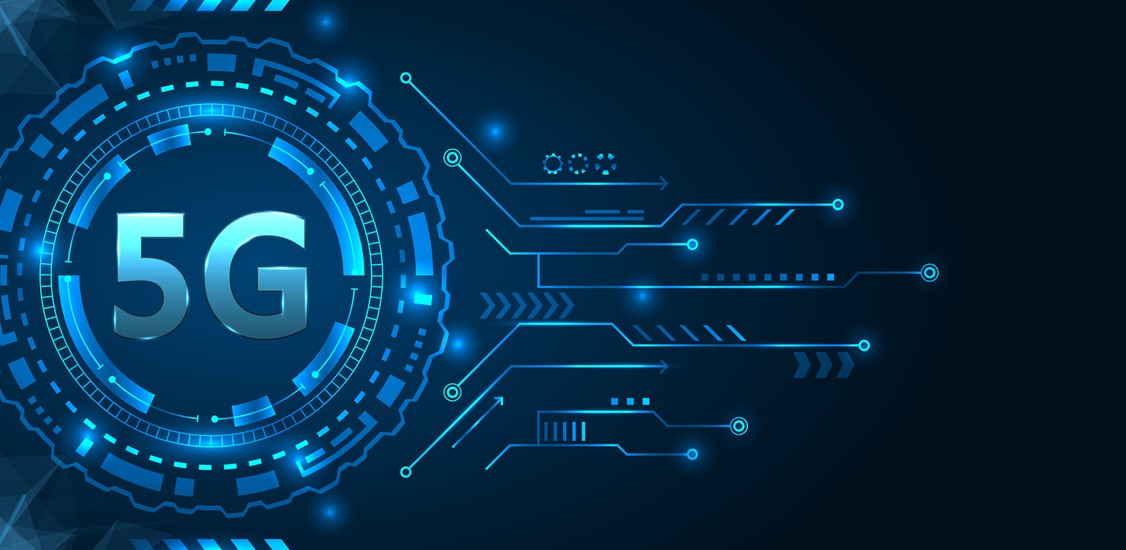Self-driving cars. Remote Surgery. Immersive VR. Interactive AR. Ultra HD video. Automated manufacturing. The Internet of Things.
The 5G hype-train promises all this and more. But what exactly is 5G and is it different from any of the other Gs? And how does it work? I’ve distilled my 8+ years of working as a telecom engineer to give you five basic, maths-free, non-technical foundations of 5G.
“5G” is simply the fifth generation of mobile communications technology. 4G was the fourth. 3G and 2G…you get the picture. Historically, each generation of mobile technology allowed faster internet speeds and better call quality. 5G, at least on paper, speeds up your downloads ten times. No more bothersome buffering, even when streaming “The Queen’s Gambit” in 4K in the backseat of your car at 70 mph. Fantastic. But how? Where can I get the signal? What phone do I need? How does this enable self-driving cars? Read on.
1. The coverage vs capacity conundrum
The signal bars on your phone are a measure of how good your coverage is. Your phone communicates with the nearest radio-mast and decodes the “signal” from it. Radio-masts are the giant, ugly antennas you see on buildings and rooftops. In the middle of nowhere, your phone cannot find a radio-mast and hence has no coverage. Every form of communication though needs a medium. In this case, it’s simply the air. But if all the phones use the same air to contact the radio-mast, how does the mast differentiate between phones? Frequency. Specific technologies - 5G, 4G, 3G - have specific frequencies on which they operate. So, a 5G phone “talks” to the 5G radio-mast using a particular frequency range. Neat.
Each new generation operates at a higher frequency range. 5G operates at a higher frequency than 4G. The higher the frequency of operation, the faster the internet speeds. This is why 5G is faster than 4G, which is faster than 3G and so on. The maximum internet speed is called capacity. Higher capacity ensures internet access in crowded stadiums and shopping malls, for example. Because of the physics of radiation, higher frequencies equal faster internet speeds. But here’s the rub: higher frequencies means lower coverage. So, 5G radio-masts have a much smaller coverage footprint than 4G. For all mobile networks, there exists an inverse relationship between coverage and capacity. Do you want faster internet? You’ll have lower coverage. Do you want more coverage? You’ll have to make do with lower speeds. You can’t get both.
5G operates at the highest frequency of any generation so far, hence the fastest speed. As you might have already guessed, this comes at a cost.
2. Planning a network rollout
The cost: if you want to provide contiguous 5G coverage to everyone, you need many more radio-masts than you did for 4G.
Physics does give us a helping hand this time. Turns out, the higher the operating frequency, the smaller the antenna you need to transmit & receive. Handy. So, we need many more radio-masts than before. But at least they don’t have to be big and ugly. They can be smaller, camouflaged and plenty. Which means we can pepper them everywhere we expect they’ll be useful — crowded shopping malls, railway stations, restaurants, hotels, tourist attractions. More masts, more coverage, faster speeds, 5G for all. Easy right? Not quite. Mobile Network Operators have to negotiate tooth and nail with local city councils and business owners to get the right licensing and ownership contracts thrashed out before embarking on a network rollout. Time-consuming and resource-intensive tasks. Technology isn’t always glamorous. Planning and executing a brand new network rollout is hard, expensive work. This is why 5G isn’t ubiquitous yet and won’t be for the short-term at least.
3. What about voice?
So far, I’ve only talked about faster internet speeds. But a significant percentage of phone users today use their phones as exactly that - a phone. Although voice call traffic has seen a steady decline over the years, it’s still a hefty chunk. What does 5G do to help? Absolutely nothing. Well, that’s unfair. Absolutely nothing, directly.
Indirectly though, the rollout of 5G networks will help ease the burden of carrying voice and data on legacy 4G and 3G networks. How? As 5G capable phones become commonplace and 5G coverage improves, more of the data traffic will be carried on 5G. Thus, leaving plenty of space on 2G, 3G and 4G for carrying voice traffic. For customers, this would mean faster call set-up times, fewer call drops and better voice quality. Win, win, win.
Two more interesting side-bars regarding voice traffic.
- Depending on the country you are in, there’s a reasonable chance that every time you make a voice call on your phone, you are automatically dropped down to 3G. Once you complete the call, your phone automatically moves back to 4G (or 5G, in the future). This is the “behind-the-scenes” traffic capacity management that some network operators deploy. You can try it now - notice the “5G” or “4G” or “LTE” symbol on your phone, dial a number, hit the green call button and you’ll see the symbol change to “H+”, “H” or “E”. End the call, give it a few seconds and you’ll see the “5G/4G/LTE” symbol re-appear.
- Eventually, as more users embrace 5G, the operators can “refarm” or reuse the existing 2G, 3G and 4G frequencies for 5G instead. This means more 5G capacity, resulting in even faster download speeds. Neat, eh? The drawback here is that older 2G and 3G phones will not work anymore. But hey, you are probably due an upgrade anyway.
4. The 5G phones cometh
This is the sexier part of the telecom industry: the shiny new, multi-megapixel phones! We all, telecom engineers included, love new phones. Smartphone sales have increased year-on-year, despite the killer virus and wretched recession. Our portal to our friends, family and vanity aka the smartphone, is surely the ultimate tech gadget of our ages. And now, with the addition of 5G, there’s another new feature to play with, get hooked on and eventually detox from. All phone manufacturers - Apple, Samsung, Google, Huawei, OnePlus, Nokia, Motorola - already have flagship 5G devices, but the real breakthrough will come when budget 5G phones begin to hit the shelves. And make no mistake, they will. Not everyone wants to shell out over a grand for a phone. Even if it has 5G. But at $300? Tempted.
But again, there are a few roadblocks here. The latest phones have to work with 5G, 4G, 3G and 2G radio masts. This means added manufacturing complexity and cost. And more breakable parts. It also means your phone is simultaneously searching for a 5G signal on top of 4G, 3G and 2G. This will lead to faster battery drain. Early reports from both Apple and Samsung flagships show poor battery performance on 5G. For the operators - on top of the added costs due to network rollout and capacity expansion - troubleshooting customer complaints is going to get harder. And faster internet speeds will herald newer apps, likely incorporating AR and VR. Which brings me to my next, and last, point.
5. The future is here
In the early-to-late 2010s, something big was brewing in the tech space. Netflix, Uber, Airbnb, Spotify, Whatsapp, YouTube and literally hundreds of other such OTT apps went from bit-part players to behemoths. How? They realised that they now had fast mobile internet to tap into. The advent of 4G opened up the economy in previously impossible ways - high fidelity audio, HD video on demand, shopping on the move, ride-hailing, video calls and so much more. All of this, on the bedrock of 4G’s coverage and capacity offering. An entire industry employing hundreds of thousands of people generating billions in revenue and taxes had come to the fore. Enabled by the ubiquity of 4G.
5G promises at least ten times faster internet speeds. What will we get to experience over the next ten years? That’s where the advent of the Internet of Things comes in. And self-driving cars. And VR gaming with near-zero latency. And more immersive Pokemon-Go.
Word of caution though: “latency” is not the same as “internet speed”. Latency is time. It’s the time it takes for your phone to contact the 5G radio-mast which in turn contacts the 5G network core which contacts the local Facebook server, which digs up your latest newsfeed and transports it back to the 5G core, down to the radio-mast and finally, wirelessly to your phone. Whew. 5G, on paper, does this one-thousandth of a second. And that’s whether you are curled up on the couch or hurtling along in the Tokyo bullet train. And that’s seriously impressive. But it’s a while away.
Today’s 5G networks are primarily designed for faster internet speeds. Think of them as “faster 4G networks”. All 5G deployments today are what’s called Non-Standalone or NSA. This means the superfast 5G network is used in conjunction with existing, but slow, 4G and 3G networks. The eventual goal is to have a Standalone 5G network - a 5G-only, ultrafast, ultra-low latency, reliable, secure network. And that will herald driverless cars and VR gaming, among other things we can’t currently even imagine.
Conclusion
So there you have it - a non-technical, maths-free, jargon-less 5G primer. There’s much more to 5G and communication theory that I have left unsaid. And I have exaggeratedly simplified some technicalities. But the essence of 5G is all here. You now hopefully have more to add the next time 5G comes up in a conversation. It’s going to be a thrilling, avantgarde decade and the possibilities that can be powered by 5G are genuinely endless. Here’s hoping at least some of it comes to fruition. Until then, nurture your need for speed.




















